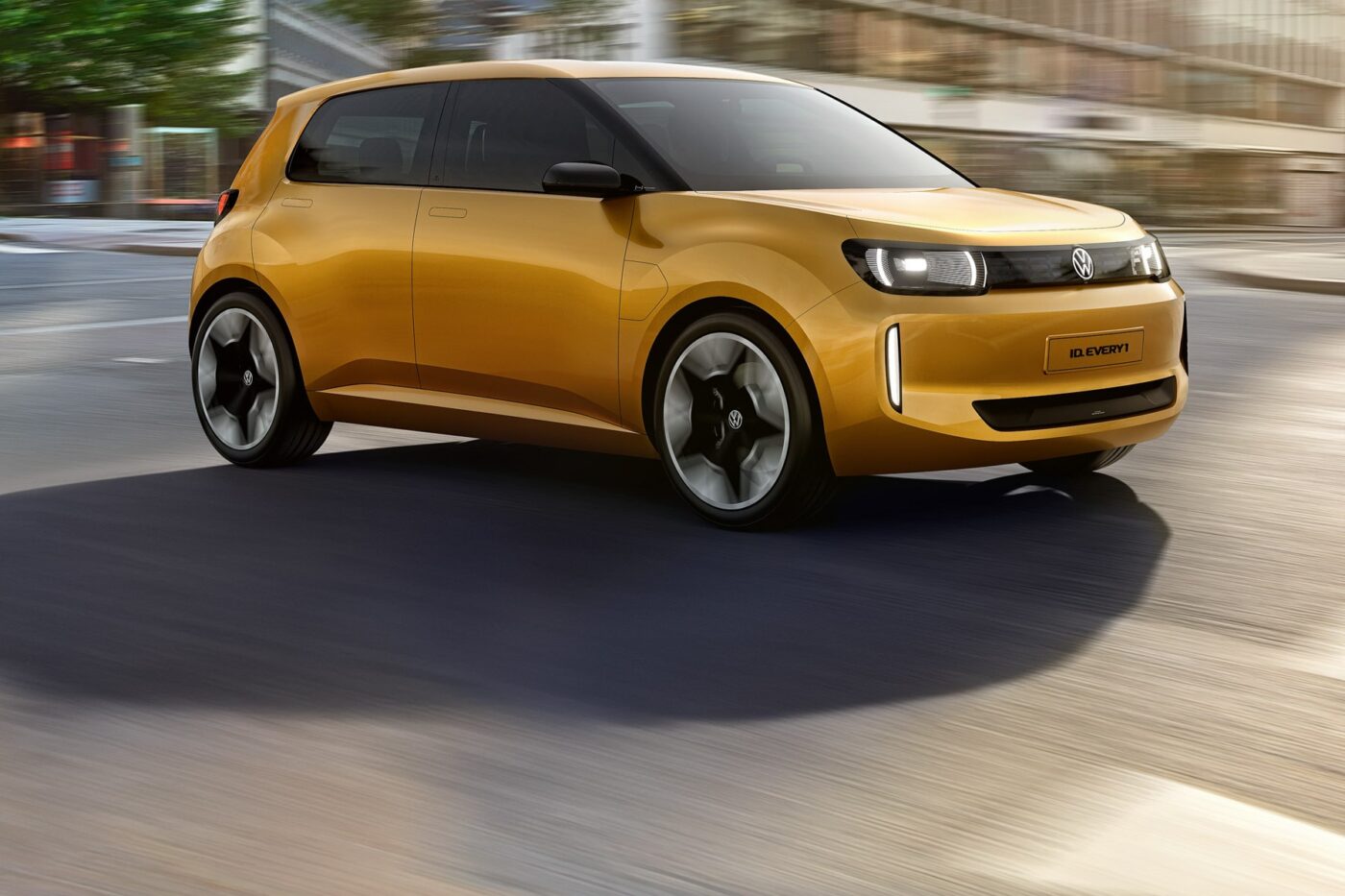
VW ID. EVERY1: How Volkswagen imagines its €20,000 electric car
There’s no doubt about it: the hopes placed in the ID. EVERY1 are high. Even before the world premiere on Wednesday in Düsseldorf, Germany, top management showed the first design sketches of the upcoming small electric car to its workforce. The feedback is said to have been positive, which has certainly not been the case a lot recently when the VW Board of Management faced its employees – the labour dispute and the threat of plant closures are still too present in people’s minds.
However, not only are the hopes high, but so is the pressure. Just more than five years after the first ID.3 rolled off the production line, Volkswagen’s electric cars based on the MEB have slowly reached a competitive level. In the beginning, the software was simply not yet ready for the market, the cars were too expensive compared to the hard plastic used, and the headlines and benchmarks were set by others. In the meantime, the electric VWs are selling increasingly well – also thanks to some updates – and the ID.7 is a real success in Europe.
Nevertheless, there is one area in which the company is still lacking: affordable small electric cars. While Stellantis, Renault and Hyundai are launching EVs for under €25,000, VW does not want to show the production version of the ID.2all concept presented in 2023 until 2026. After that, one premiere should be quickly followed by the next. VW will also launch the corresponding small SUV in the four-metre segment, followed by further offshoots from Skoda and Cupra. And then, in 2027, the ID.1 with a sales price of €20,000 is set to open up another new segment for VW.
VW is rolling up the small electric car field from behind
VW must deliver, because the market will probably not forgive it again if it unleashes unfinished EVs onto the market, while the competition delivers. Volkswagen is already late to the game. Up to now, the German carmaker always managed to roll up the field from behind. When the SUV segment began to boom in the early 2000s, Volkswagen took its time with the Tiguan – and then launched a best-seller after all. The hope is to repeat that with the ID.1 and ID.2 .
For the premiere of the ID. EVERY1 concept car, the marketing department immediately endeavours to make the big comparisons. “Volkswagen has made affordable mobility possible for millions of people with compact and likeable cars since the Beetle,” said the Wolfsburg-based company. Unlike the ID.7, which costs more than 50,000 euros, the small electric cars really do have what it takes to bring electric mobility to the masses as “affordable” cars – if the data is commensurate with the price. Because it can’t be purely about the price tag, the competition is already at the forefront – and even more so in 2027.
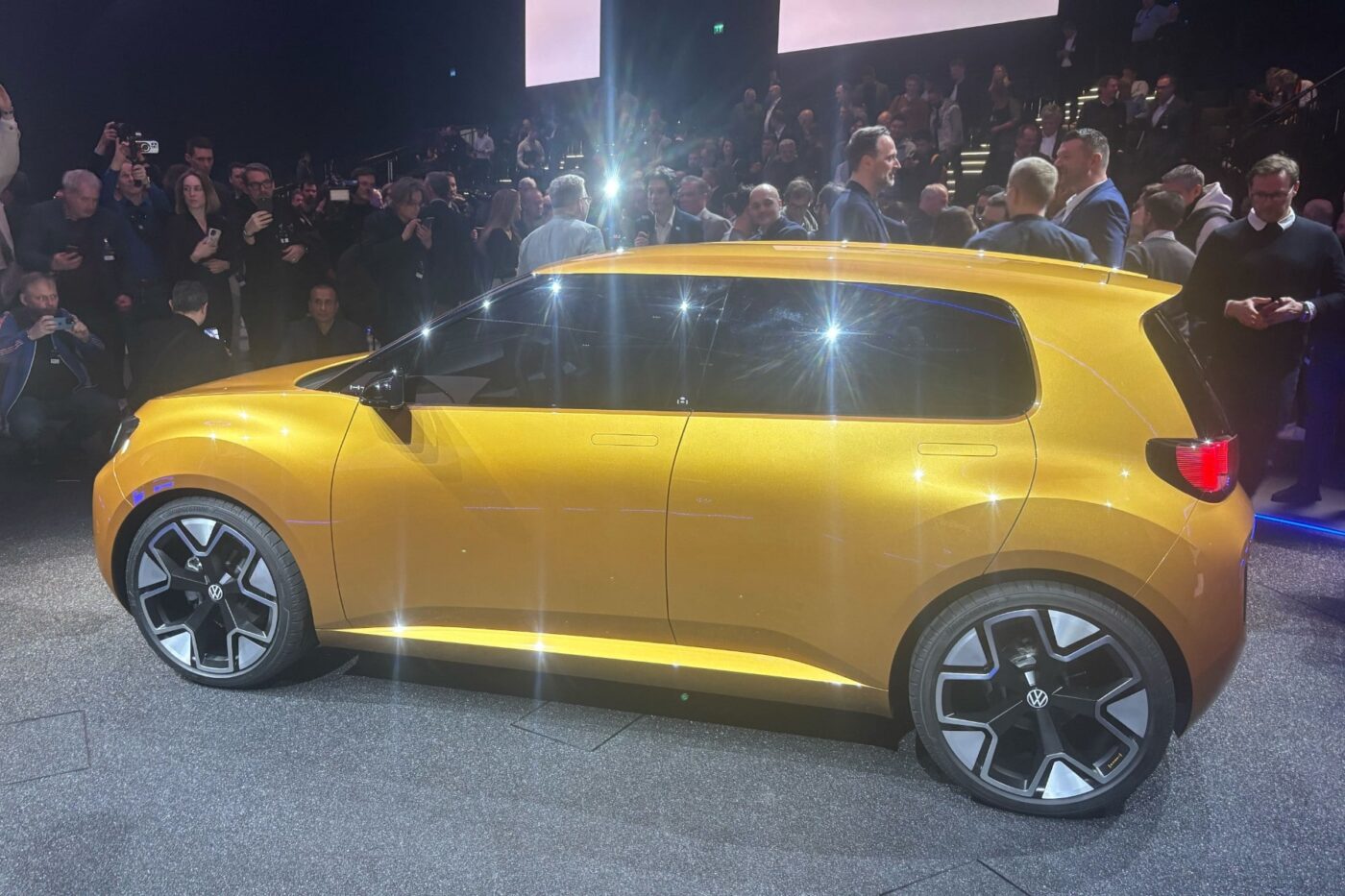



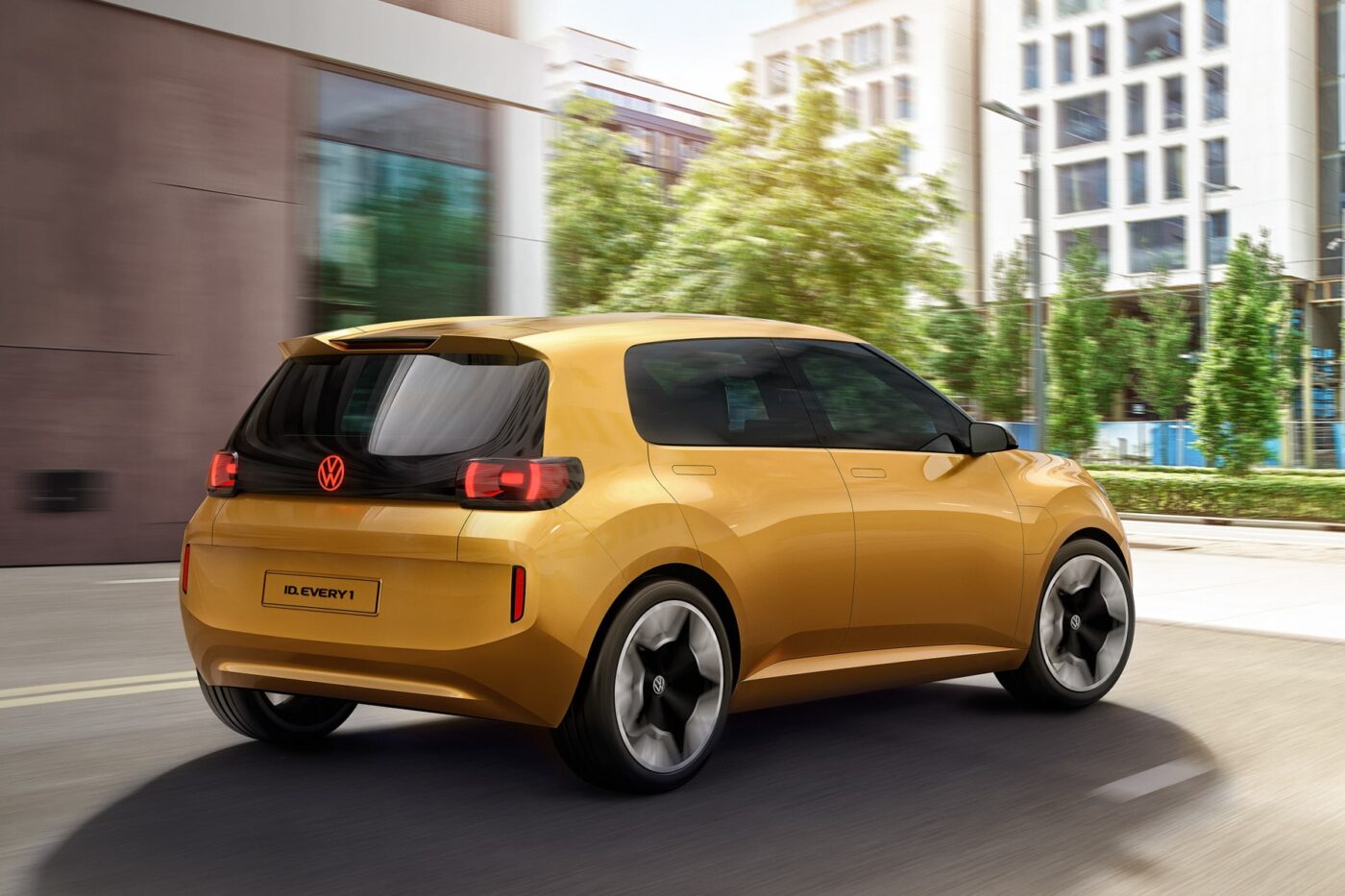
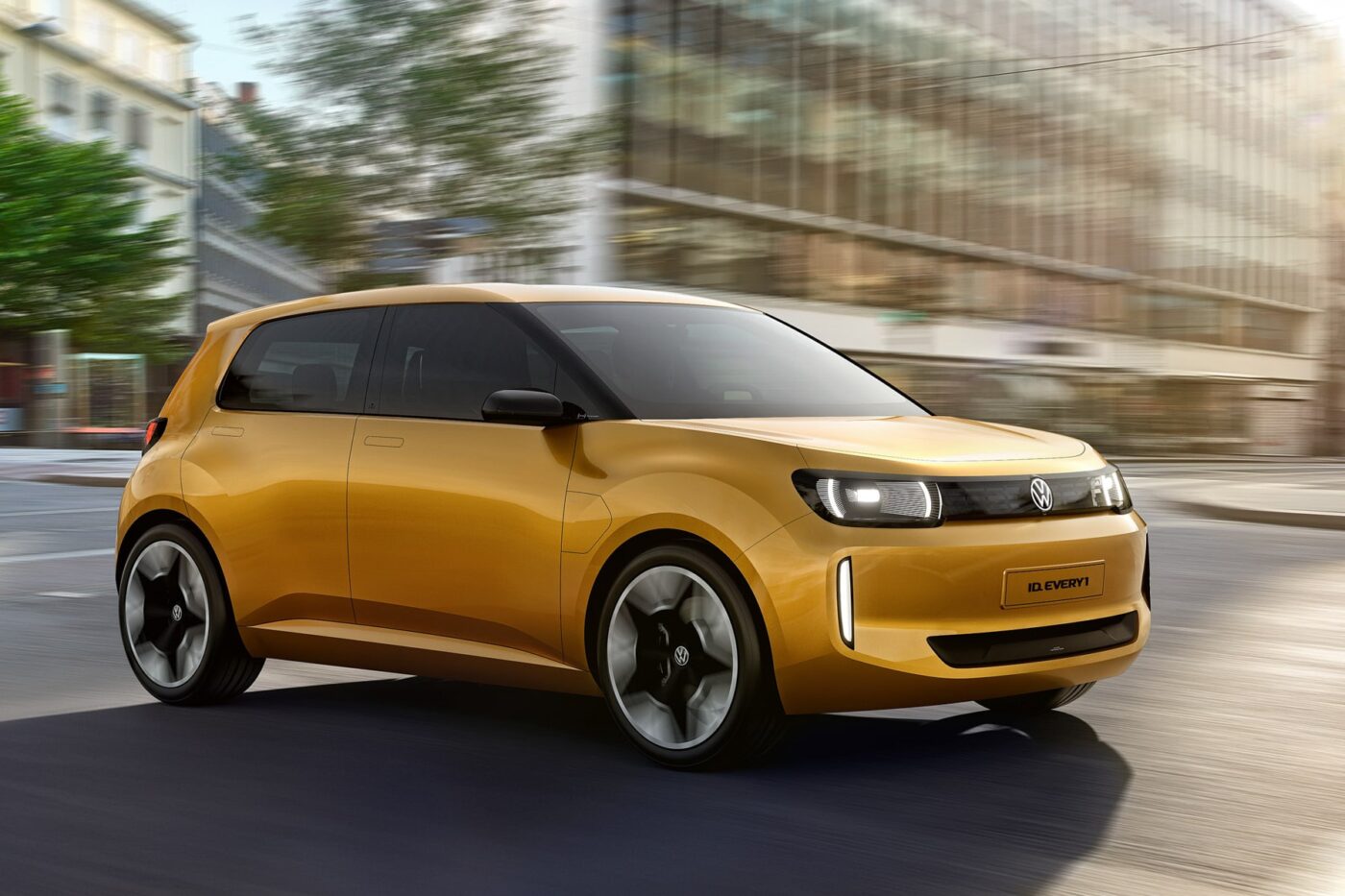





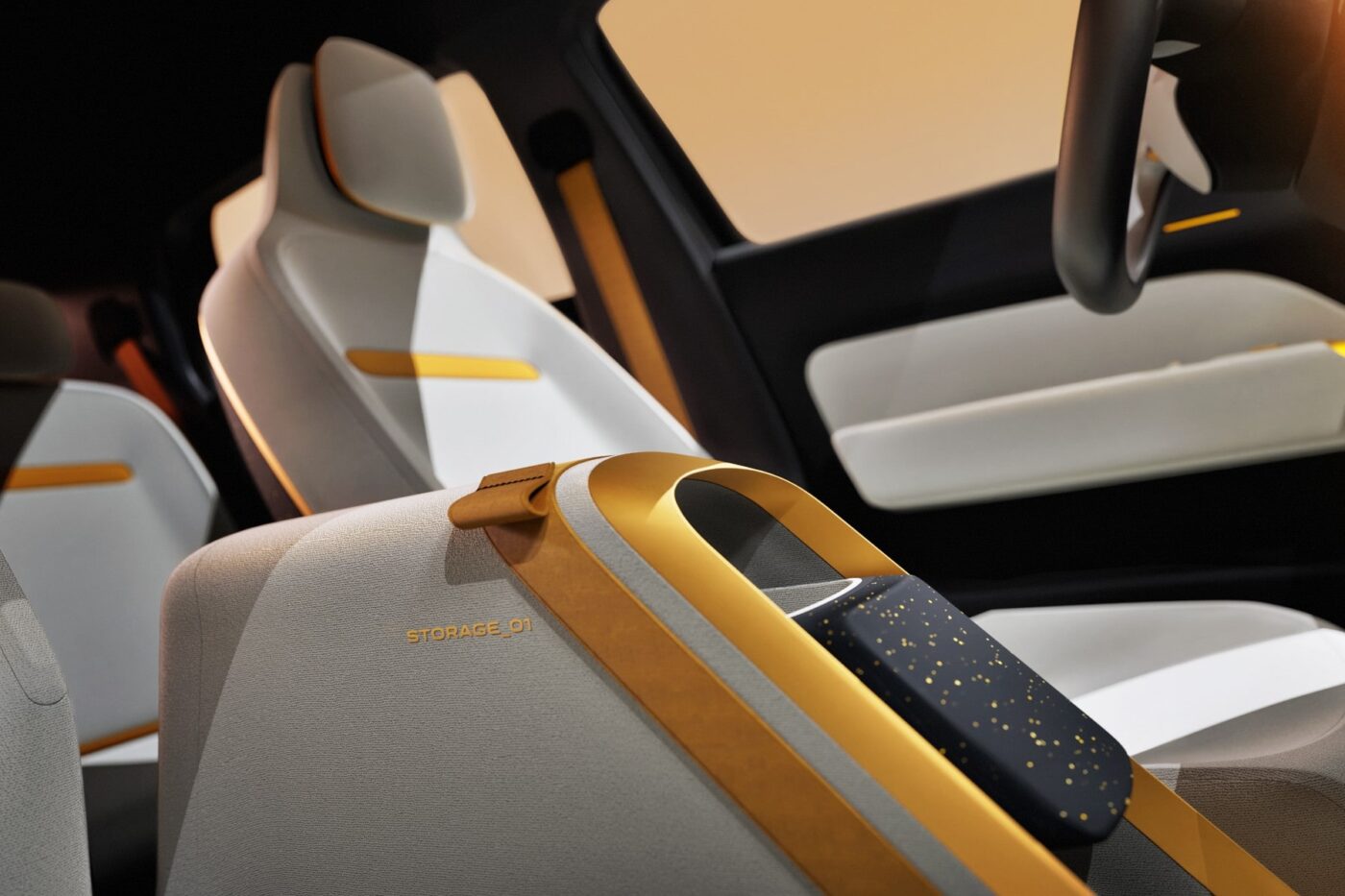
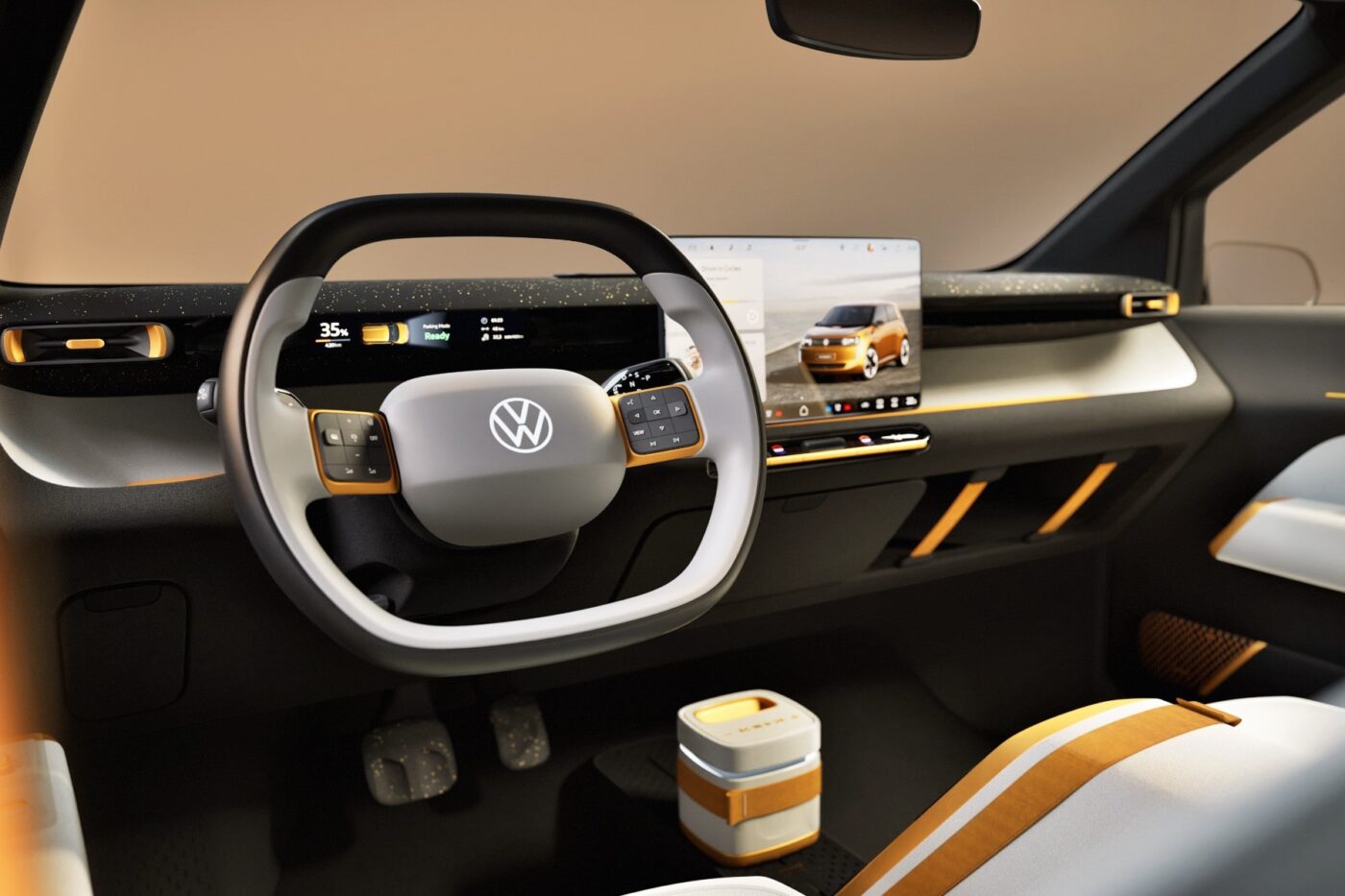

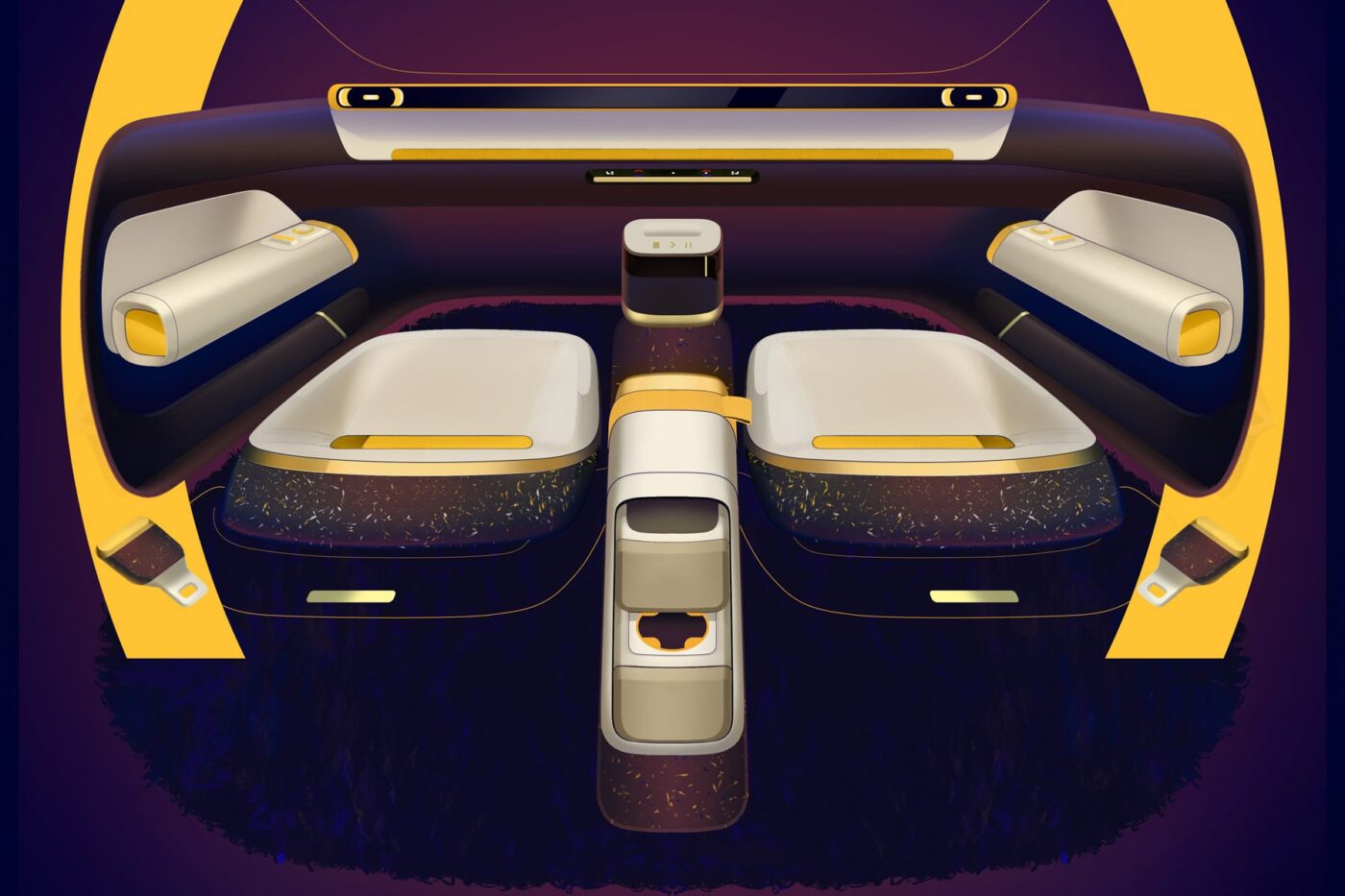
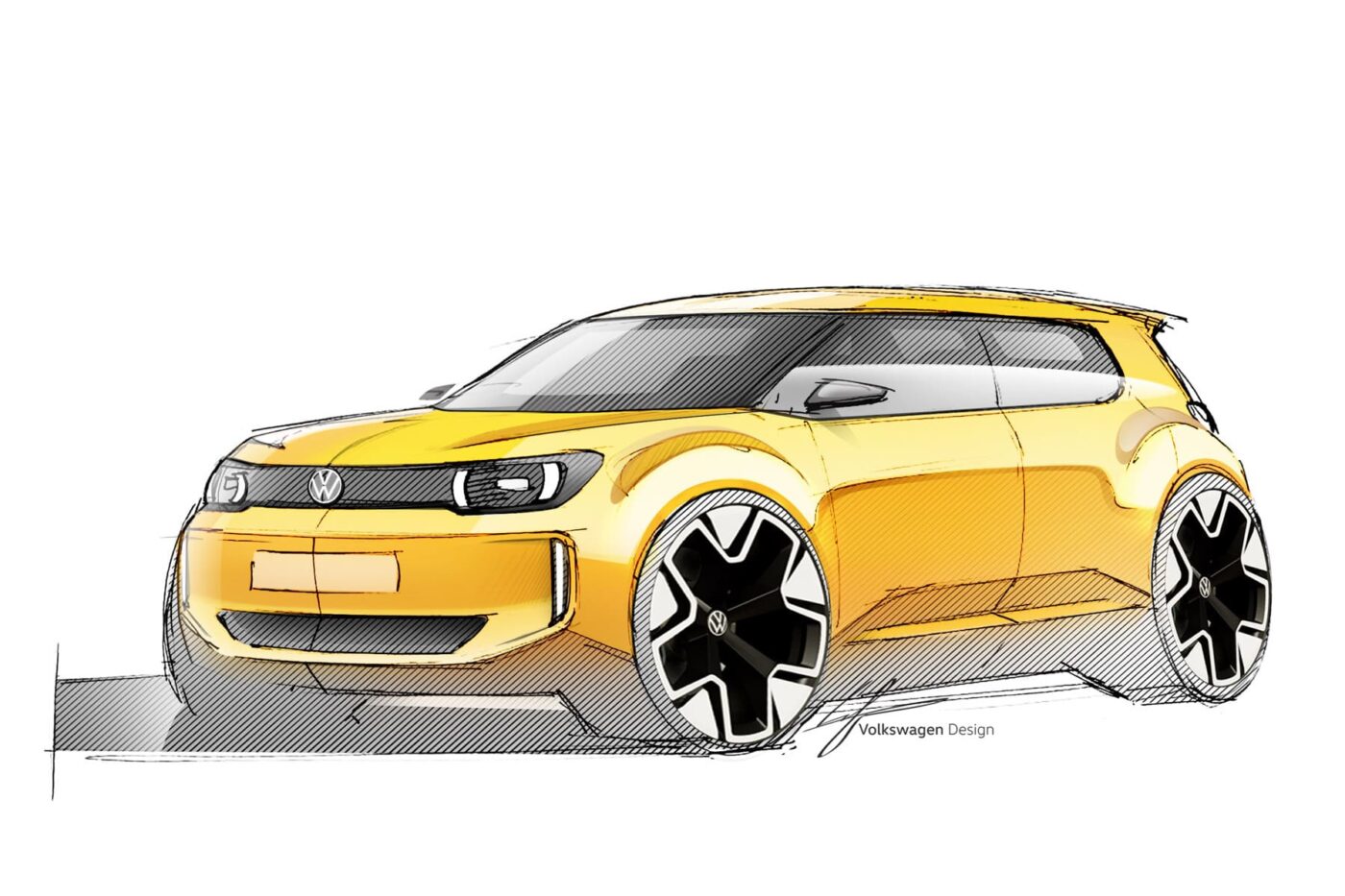
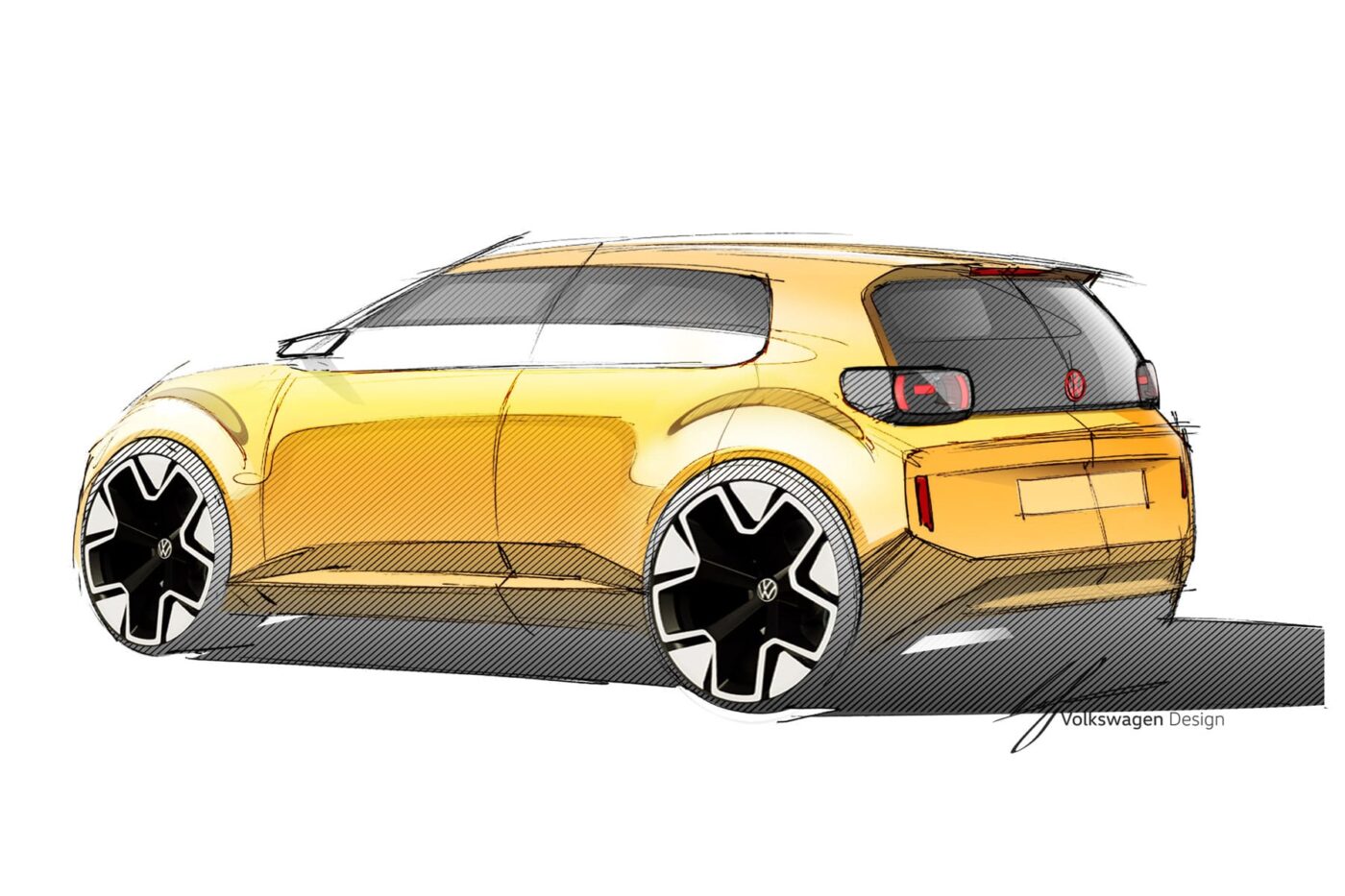
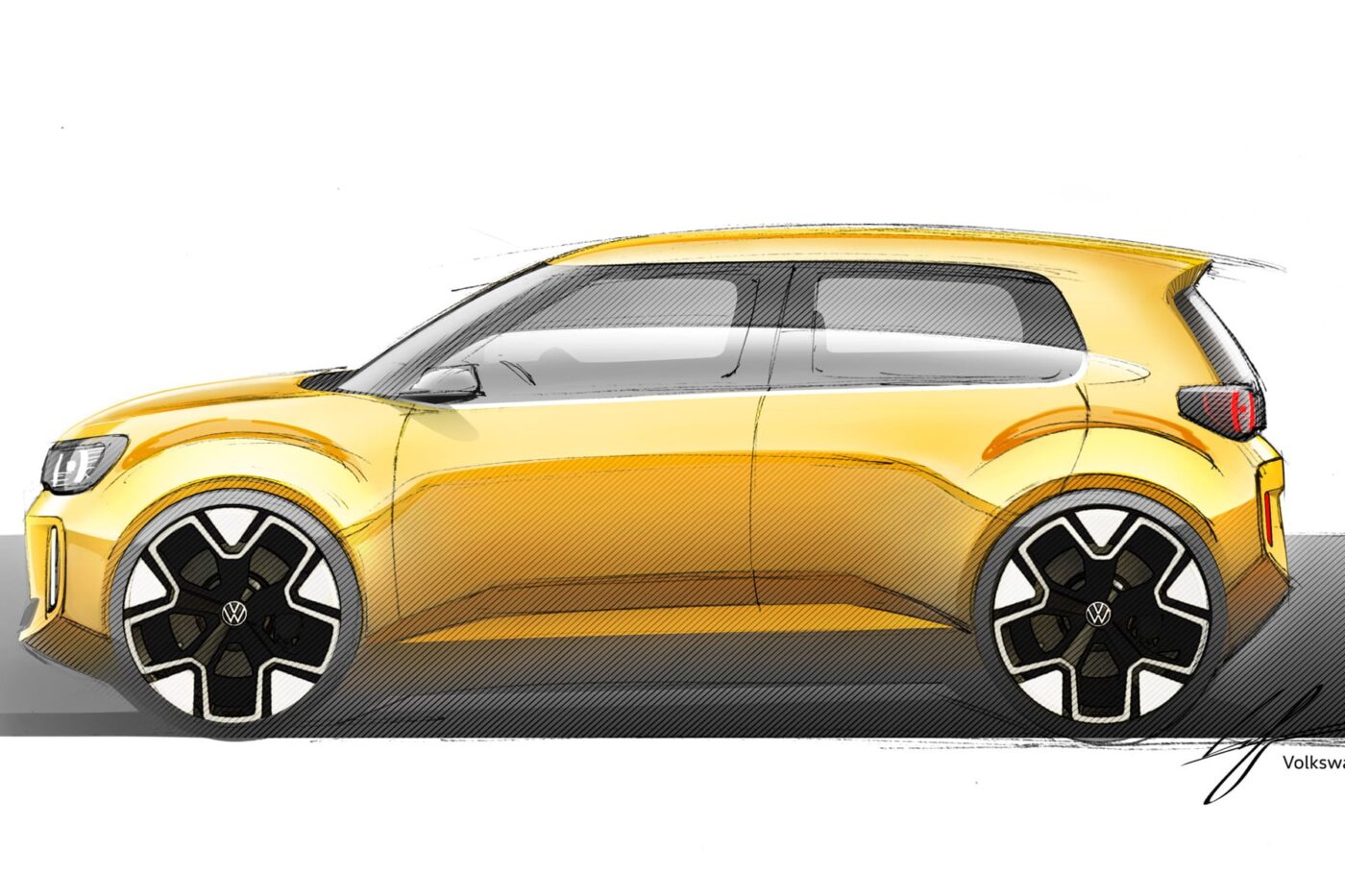
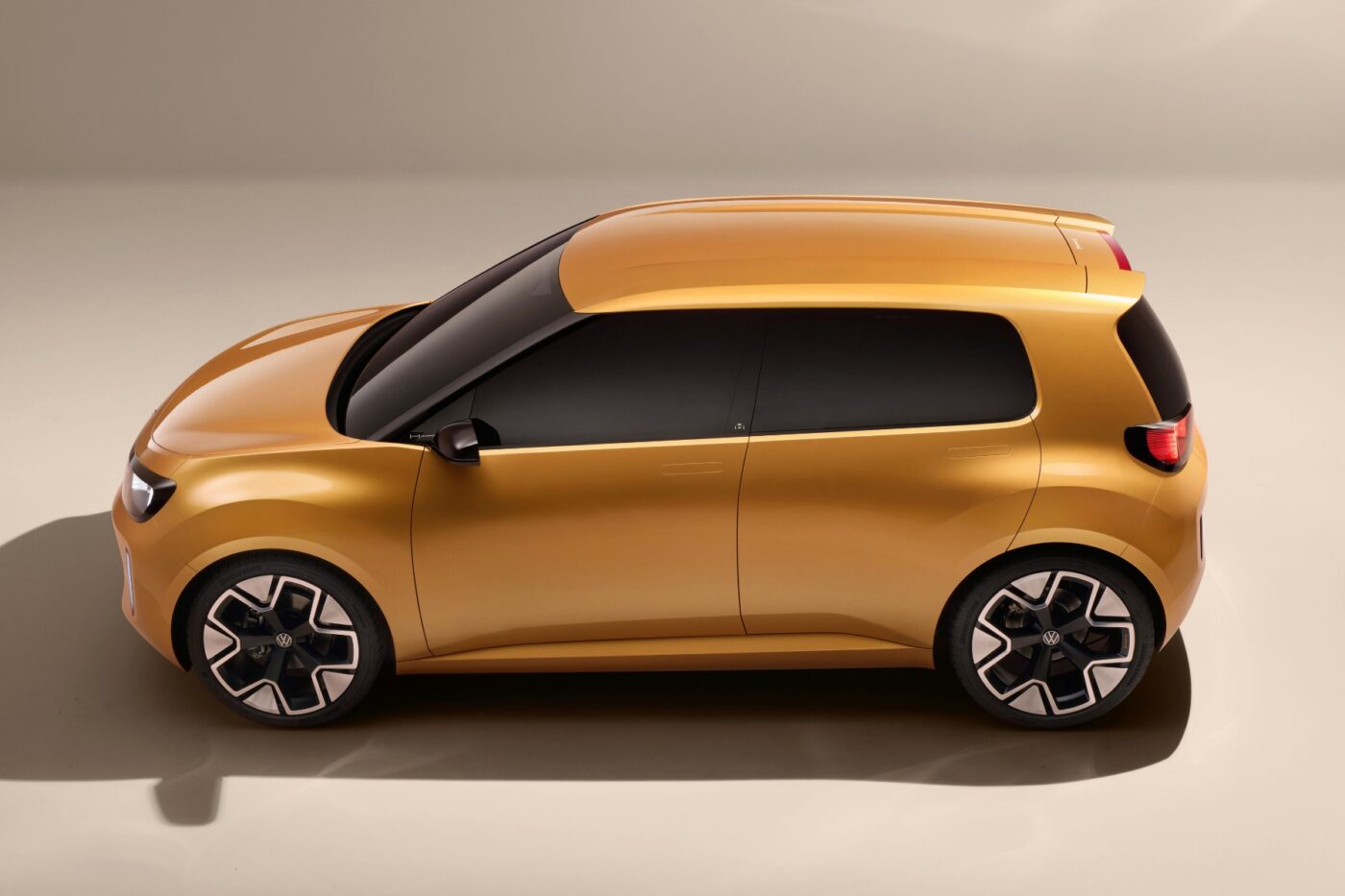
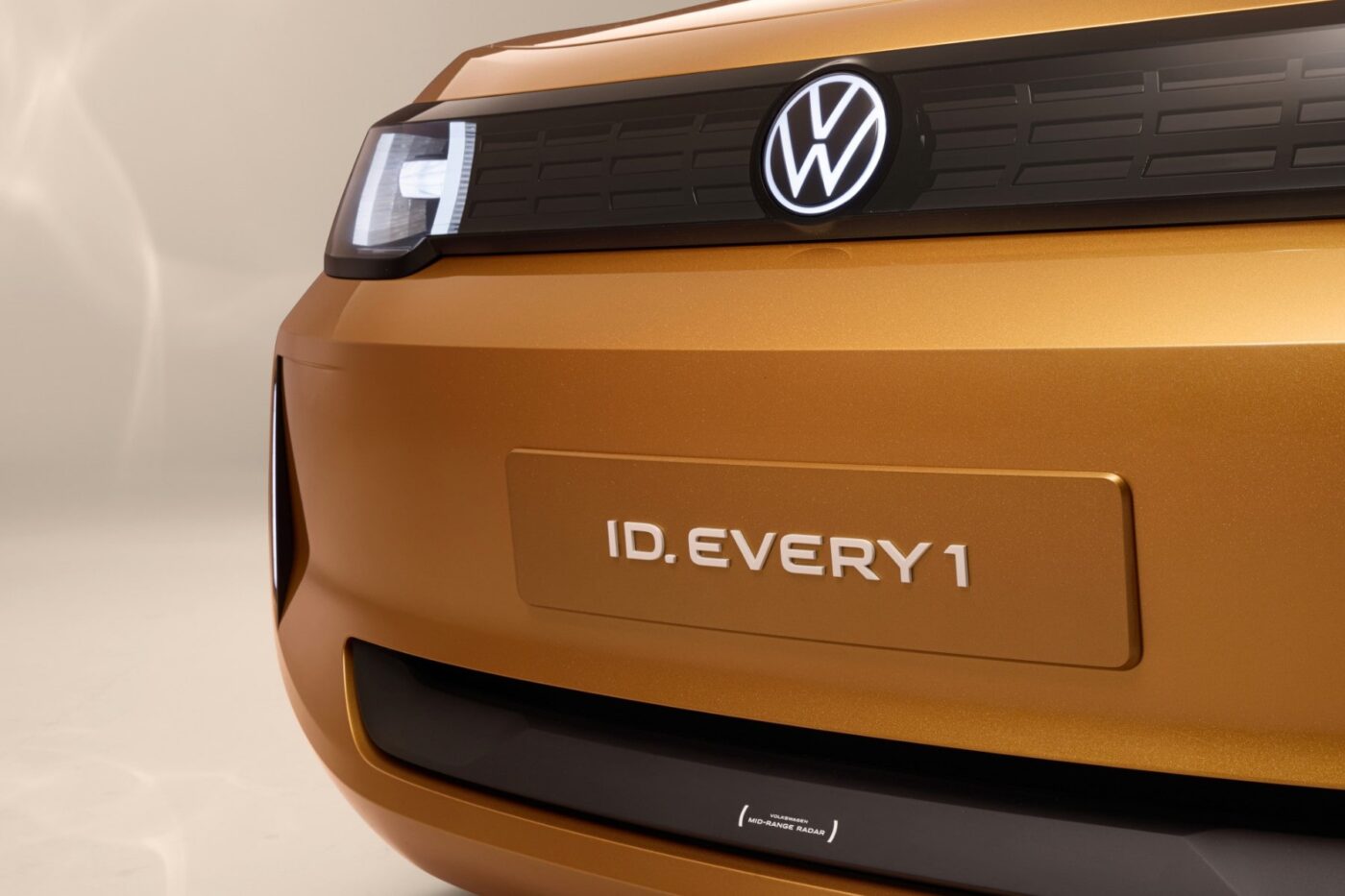
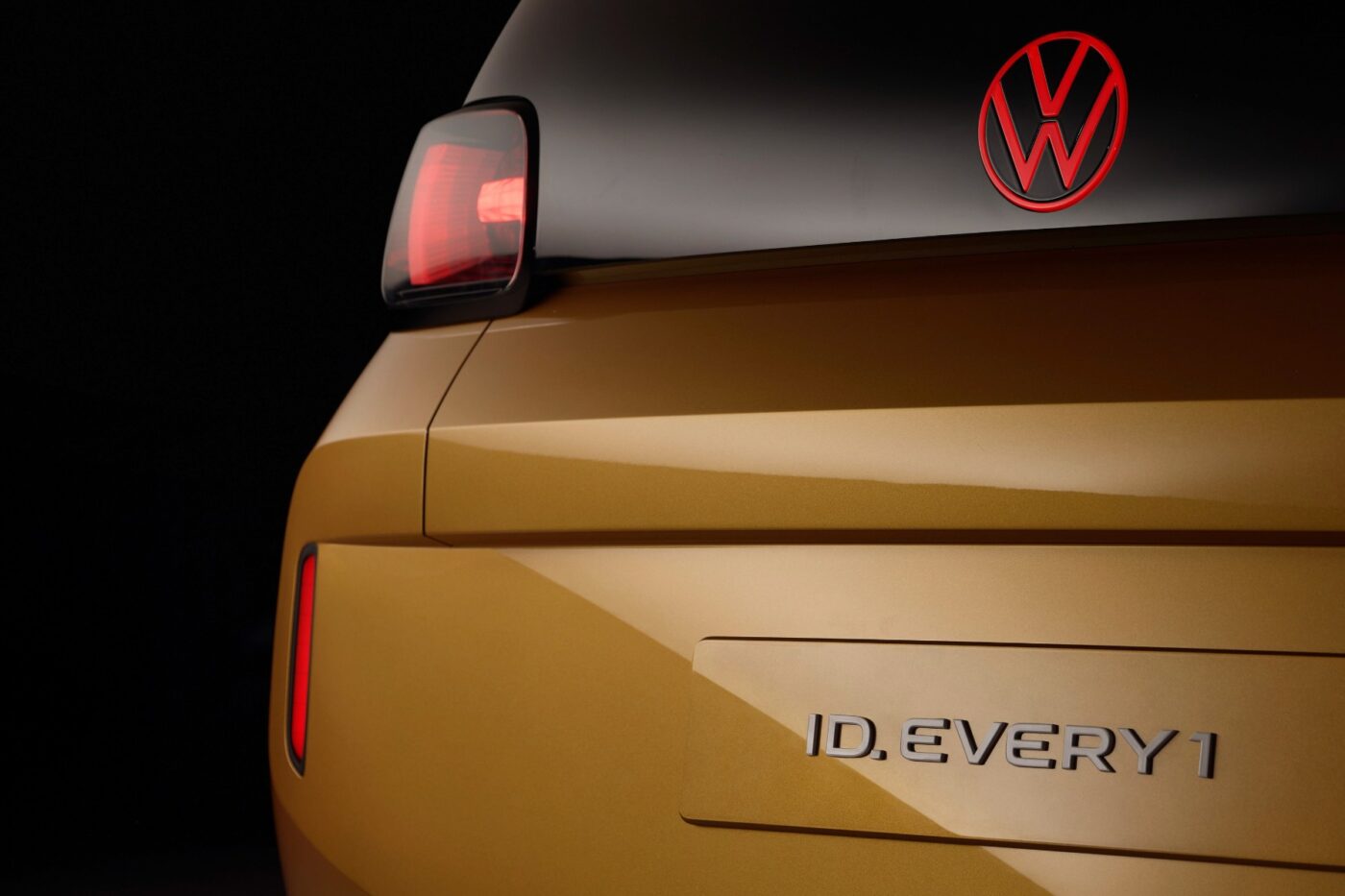
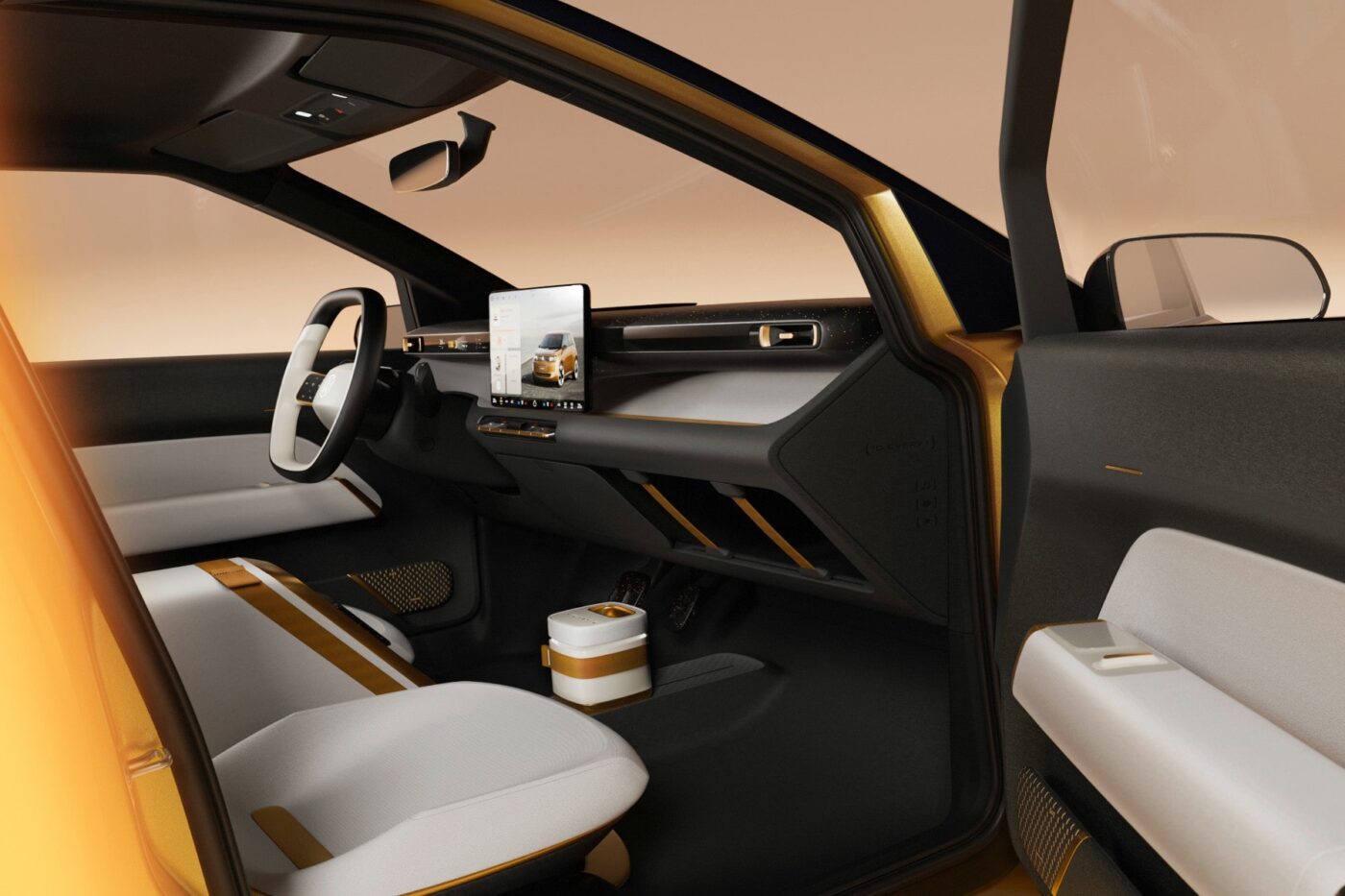
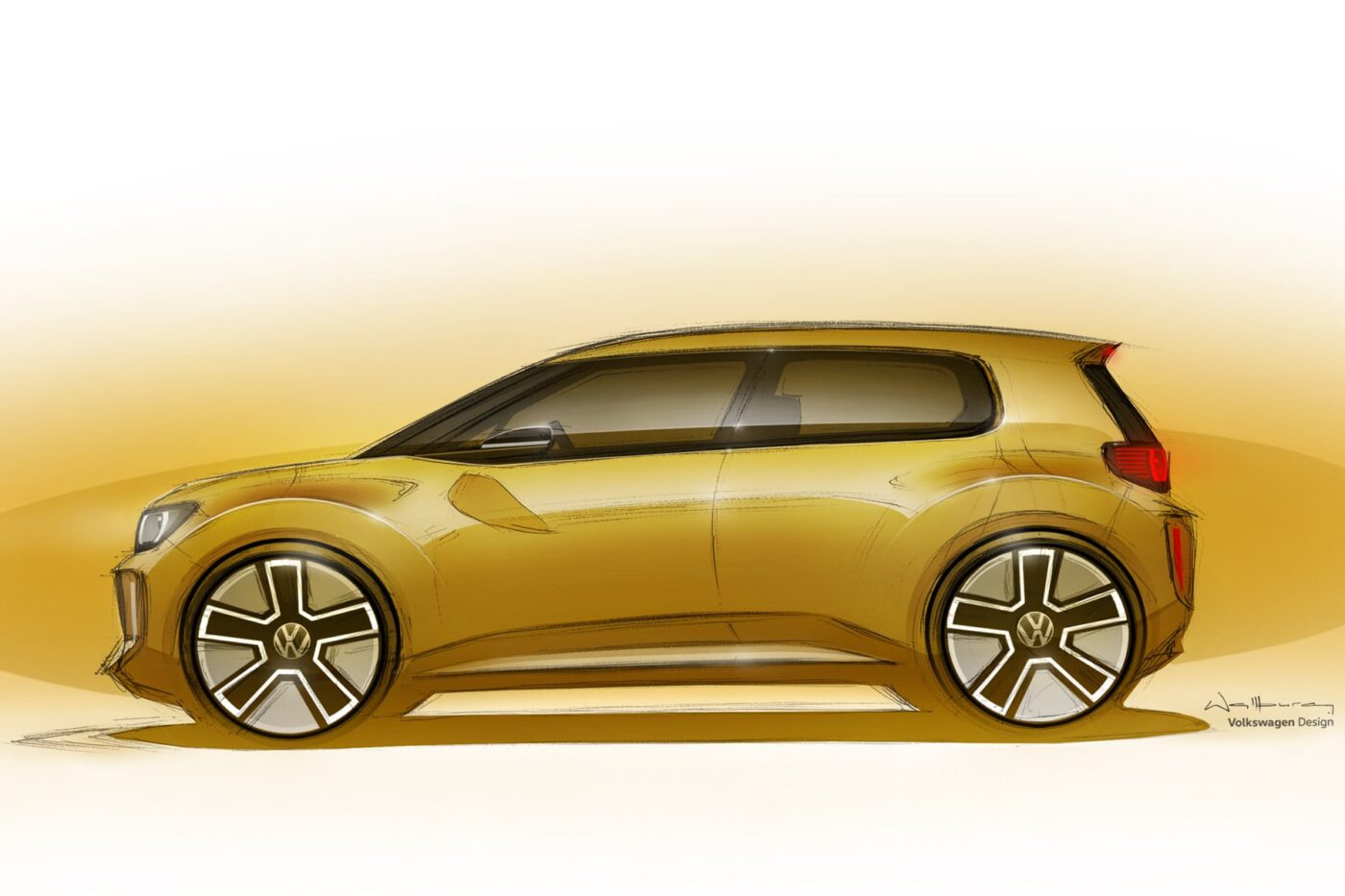
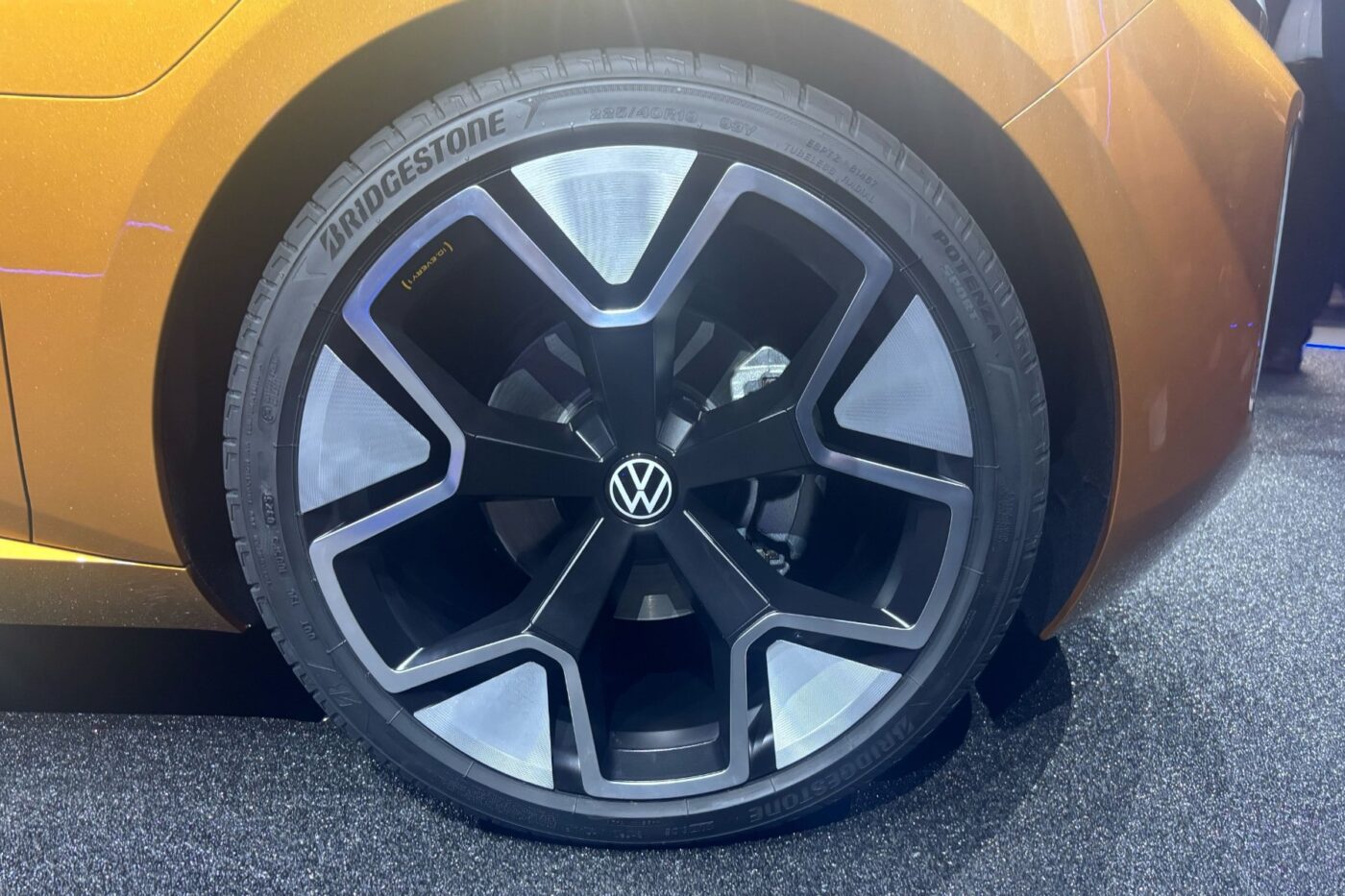
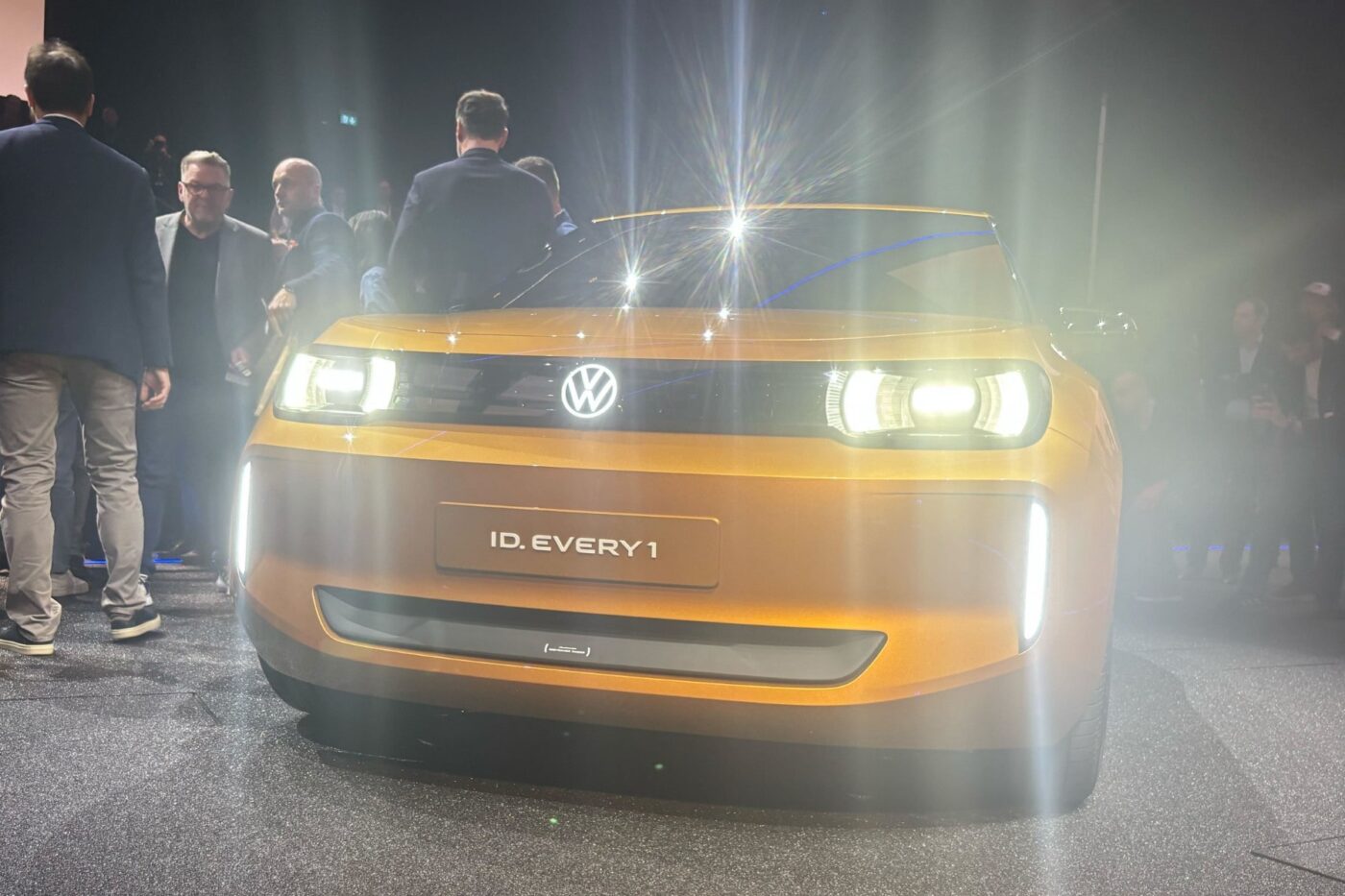
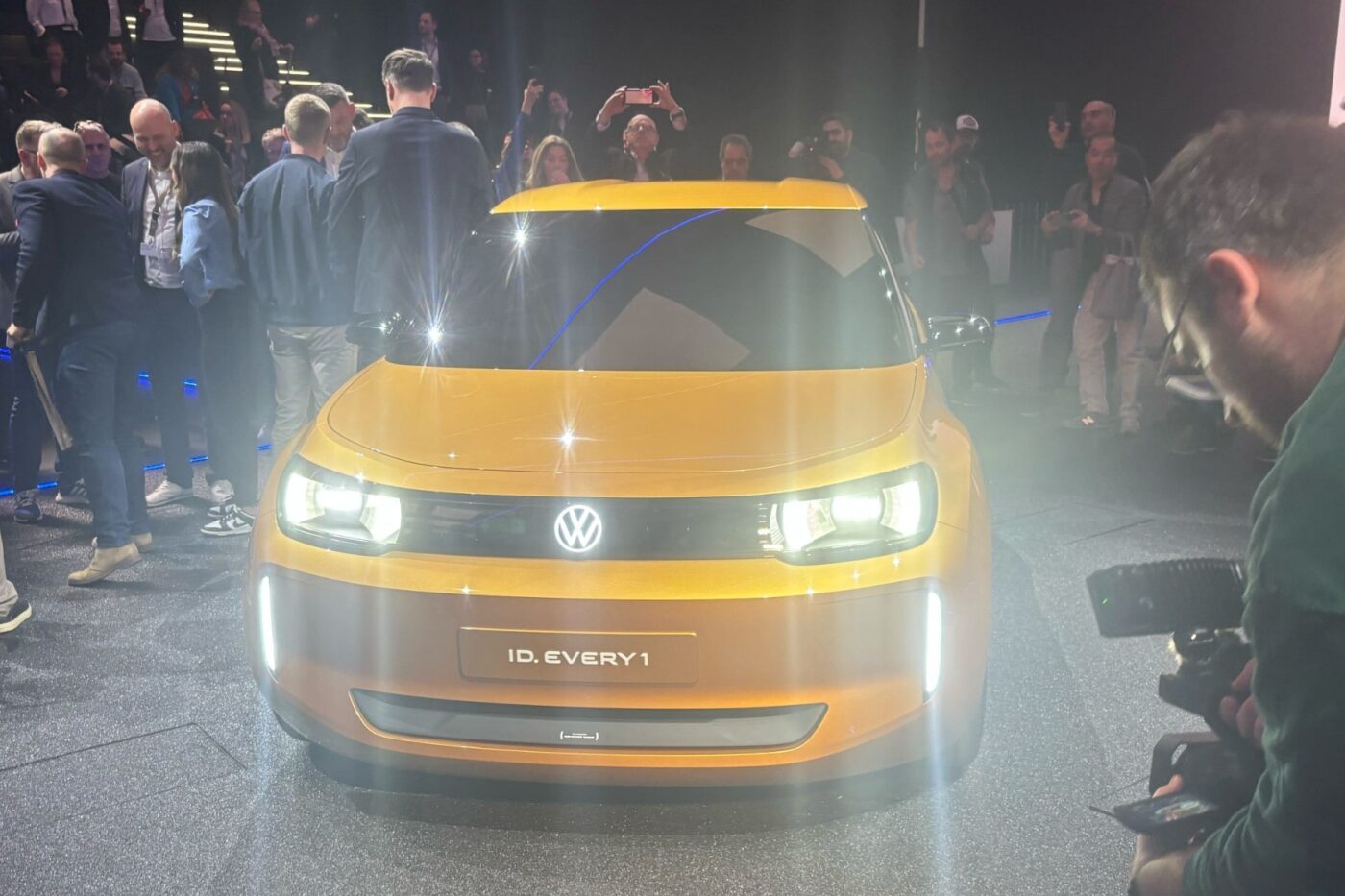
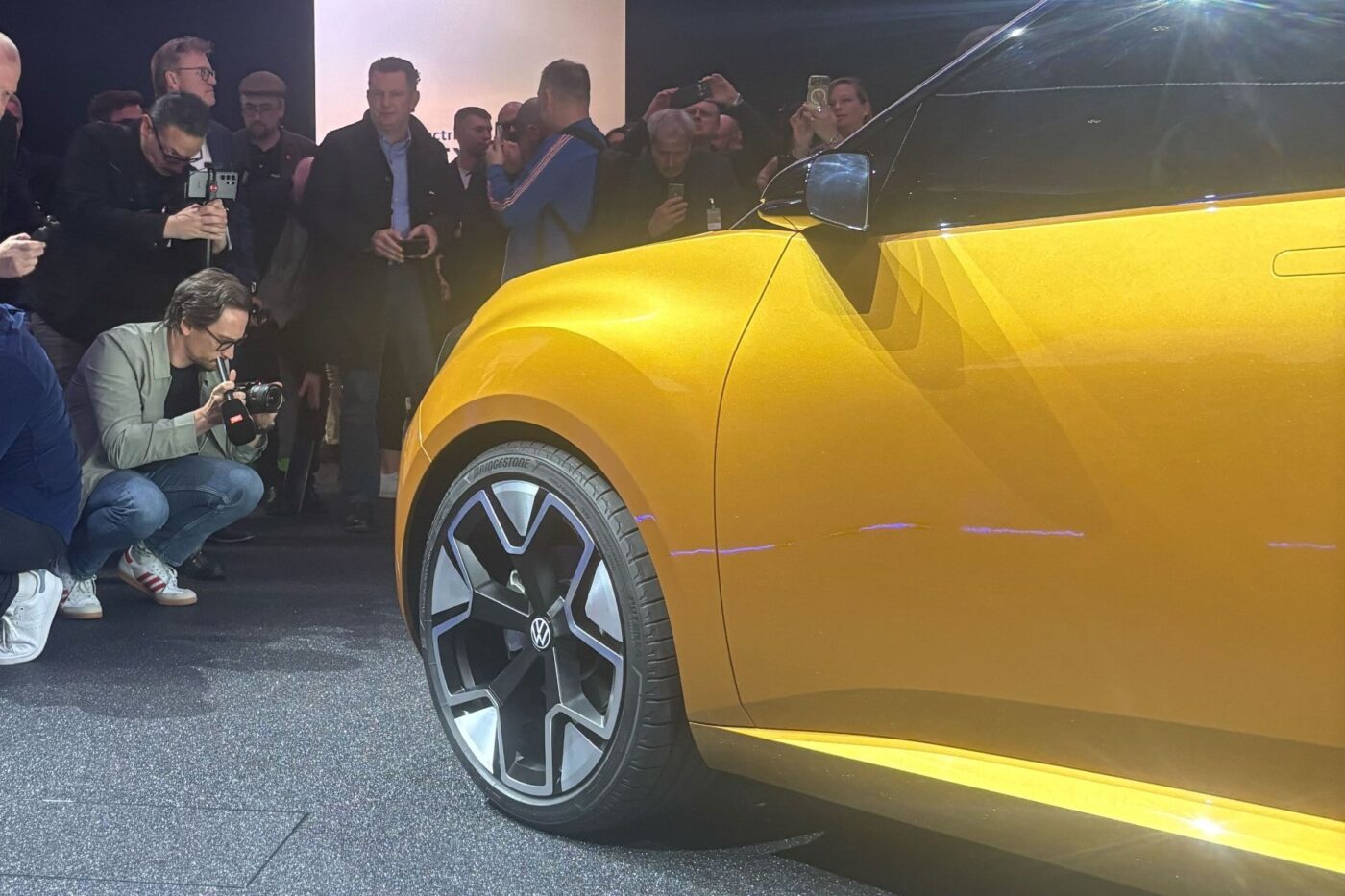
And indeed, VW already announced some key data right at the premiere, although the concept car is primarily about the design – more on that in a moment. Like the ID.2all and its sports version ID. Concept GTI, the ID. EVERY1 is part of the Electric Urban Car Family and is based on the new modular e-drive system with front-wheel drive. The small ID. EVERY1 uses a newly developed electric motor with 70 kW, which should enable a top speed of 130 kph. There are no details about the battery yet, but the (WLTP) range should be “at least 250 kilometres,” according to VW.
That doesn’t sound outstanding at first, so let’s take a quick look at the competition: models currently on offer for less than 20,000 euros include the Dacia Spring and Leapmotor T03 – Renault is planning the electric Twingo for 20,000 euros and a new Dacia small car for 18,000 euros, but has not yet provided any data. The Spring, which is built in China, is available with 33 or 48 kW of power, a WLTP range of around 225 kilometres and can also travel at a maximum speed of 125 kph. However, the Leapmotor already offers roughly what VW is promising for 2027: 70 kW of power and a range of 263 kilometres. But there are compromises when it comes to charging: It takes 36 minutes to bring the charge level from 30 to 80 per cent.
| ID. EVERY1 | Specifications |
|---|---|
| Dimensions | 3,88×1,82×1,49m |
| Power | 70 kW |
| Top speed | 130 kph |
| Range | 250 km |
| Price | “about” 20,000 euros |
The ID.1 could score points here, but VW has yet to provide any information on the charging capacity of the series model. It will likely exceed the 32 kW calculated for the Leapmotor’s 37.7 kWh battery. If we assume that the ID.1 will have a 35 kWh battery (a Hyundai Inster with 42 kWh achieves almost 330 WLTP kilometres, so the ID.1 will be well below 40 kWh), just under 25 kWh would be required for the standard charging process from ten to 80 per cent. If VW wants to achieve this in half an hour, it requires an average of 50 kW, and 60 kW for 25 minutes. And if VW could charge the battery in this window with 2C, i.e. twice the energy content, 21 minutes would be possible.
However, as already mentioned, the German carmaker is adamantly silent about the battery. It is thus not even clear which cell chemistry will be used in the ID.1. The ID.2 will probably have an LFP battery in the base version, but the announced top version with a range of 400 kilometres will have an NMC battery. Hyundai will offer the Inster with a 42-kWh battery from €23,900 and use NMC cells as early as 2025. Other €25,000 electric cars usually use LFP cells, which can have disadvantages in cold weather, for example, especially if battery heating is omitted for cost reasons. VW will have to be careful here.
Let’s leave the realm of speculation and look at what has been confirmed: the ID. EVERY1 is 3.88 metres long and 1.81 metres wide and, according to VW, will be positioned between the old e-Up! (3.60 metres) and the ID.2all (4.05 metres) or the combustion-powered Polo (4.07 metres). The Hyundai Inster, which we just mentioned, is around 3.83 metres long, but 20 centimetres narrower. At 3.62 metres, the Leapmotor T03 is more like the former e-Up!, while the Spring is 3.70 metres long. And the two models are also narrower, at around 1.60 metres.
You can see that in the ID. EVERY1 – in both a positive and negative sense. Thanks to the additional width, it offers somewhat sportier and stockier proportions than the competitor models mentioned – and probably also noticeably more air in the interior. In narrow garages or city car parks, it is probably easier to park and get out of the other models than the VW. And the larger front will probably also have a negative impact on aerodynamics and motorway consumption. Yes, as a small electric car, the ID.1 will not be a long-distance vehicle. But to fulfil the promise of affordable mobility – we remember the Beetle comparison – the ID.1 must also be able to cover many customer profiles. And that includes the motorway on the commute or a weekend trip. The ID. EVERY1 is designed as a four-seater, and the series version will probably be too. The boot can then hold 305 litres, which is roughly on par with the Dacia Spring.
ID.1 may use Rivian software architecture
How the ID.1 intends to distinguish itself when the small car’s dimensions limit the available space in purely physical terms and factors such as the battery restrict the room for manoeuvre in terms of price is made clear by VW at the premiere. Above all, the ID.1 should score points with the software that once spoilt the MEB launch. “With future models, we are talking about Customer Defined Vehicles. The ID. EVERY1 shows that we are placing our customers, their wishes, their interests and their preferences at the centre of vehicle development more consistently than ever before,” says Kai Grünitz, Volkswagen Brand Board Member for Technical Development. “As the first model in the entire Group,” the series version of the ID. EVERY1 will utilise a fundamentally new, particularly powerful software architecture – presumably the architecture that is being developed jointly with Rivian. “This will enable the future basic Volkswagen to receive new functions over its entire life cycle if its users so wish. Even after the purchase of a new car, it can be customised to their individual needs,” writes VW. However, details remain to be seen.
That also applies to the design, where the ID. EVERY1 is already intended to set the general direction for the series model. “We aimed to create something bold yet accessible,” says chief designer Andreas Mindt. “The ID. EVERY1 is self-confident, but remains likeable – thanks to details such as the dynamic front lights and the ‘smiling’ rear. These design elements make it more than just a car: they give it character and an identity that people can connect with.”
There are certain similarities – for example, in the shape of the headlights – to the ID.Life study that VW presented at the IAA 2021. However, this design as a preview for the ID.2 fell through with its retro references and was rejected by the new VW brand boss Thomas Schäfer – Mindt, as the new Head of Design, then designed the ID.2all with more pleasing lines.
“Perfect” space economy due to front-wheel drive
The design of the ID. EVERY1 is said to have been created according to the same basic principles that Mindt presented at the time as the “central cornerstones of the new design language:” stability, sympathy and the surprising element of “the secret sauce” The visual stability of the ID. EVERY1’s visual stability comes from the flared wheel arches, the comparatively large 19-inch rims for such a vehicle and the additional 20 centimetres of width (with the disadvantages mentioned above). The appeal is to be achieved through a friendly appearance – the striking LED headlights and the stylised radiator grille are intended to look familiar. In addition, the entire vehicle is proportioned in the “golden ratio,” which people subconsciously find appealing. “In simple terms, it is the ratio of three-fifths to two-fifths of a picture, a sculpture or even the layout of a vehicle view. Even Leonardo da Vinci followed this geometric principle in works of art such as the Mona Lisa,” says VW. Applied to the ID. EVERY1, this means that the two-fifths to three-fifths divide the window strip from the body surfaces in the side view, for example, and at the rear, it is the ratio of the bumper to the flat rear window. The front section with the black ‘radiator’ also follows the golden ratio.
The “secret sauce,” on the other hand, is not immediately recognisable – after all, it is supposed to be secret. The ‘Flying Roof Concept’ features a lowered roofline in the centre, resulting in a very striking view, especially from above. This depression in the centre of the roof is echoed by the third brake light at the rear, with the two outer surfaces forming the roof edge as an aerodynamic spoiler lip. This is also intended to improve the air flow, which increases the range.
That leaves a look at the interior: here VW speaks of a ‘revolutionary space giant.’ The new front-wheel drive MEB is intended to enable “perfect” space economy. At least in the study, there is a central touchscreen and underneath it real buttons for the air conditioning, seat heating and audio volume. VW also states that the “haptically pleasant surfaces are finished in warm, friendly colours” and that there is to be a “lounge-like seating system.” Here, too, the company has reformed after the hard plastic disaster of the first ID.3.
VW as a “brand for everyone”
Small details are designed to increase practicality: The dashboard is characterised by horizontal lines, for example, into which a small rail is also integrated on the passenger side. A tablet holder or a small table can be clipped onto this. And the centre console can – as in the large ID. Buzz – can be moved on a rail as a ‘multifunctional shelf’ up to the rear seat.
In summary, brand boss Schäfer sees the ID. EVERY1 “the final piece of the puzzle on our way to the broadest model selection in the volume segment.”
“We will then offer the right car with the right drive system for every customer – including affordable all-electric entry-level mobility,” says Schäfer. “Our ambition is to become the world’s leading volume manufacturer in terms of technology by 2030. And as a brand for everyone – just as you would expect from Volkswagen.”

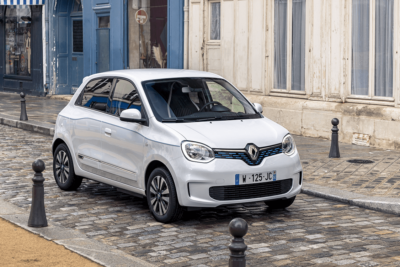
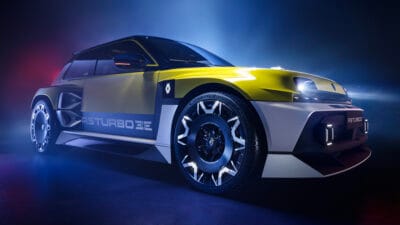
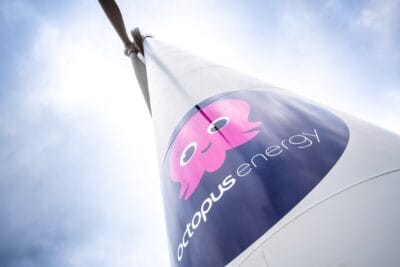
1 Comment